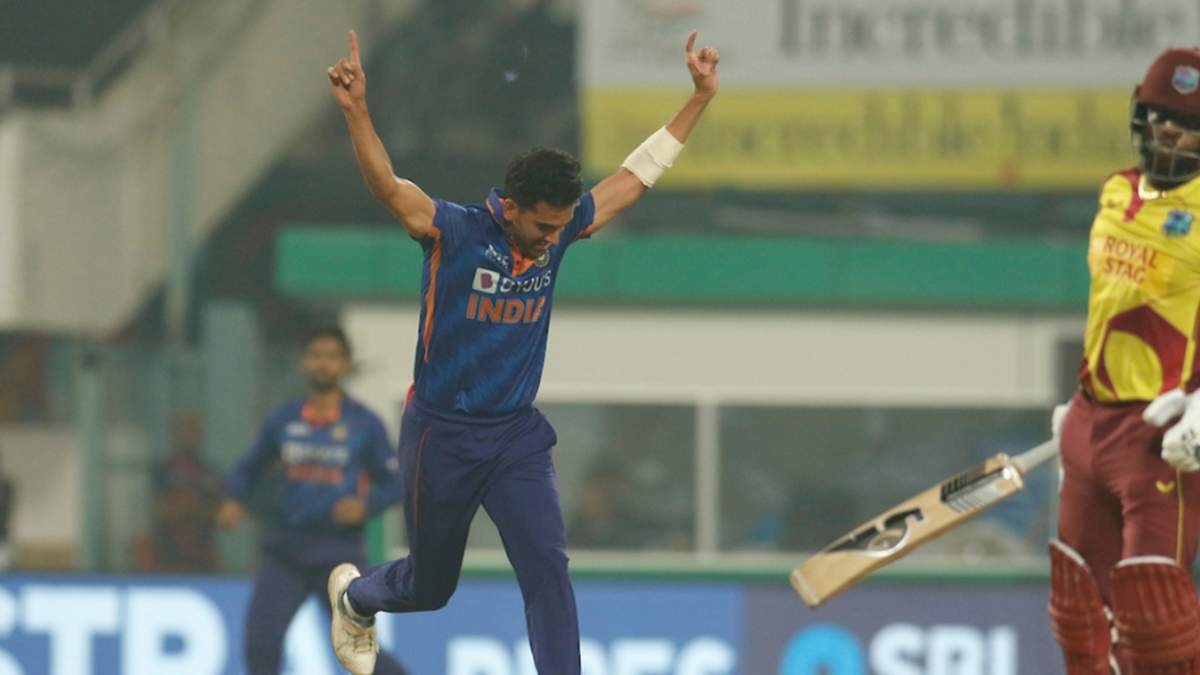
A strange moment in the third India-West Indies T20I, in which the tourists were awarded no runs despite the ball going to the boundary rope off the pad, highlighted a loophole in the ICC playing conditions.
Kyle Mayers was given out lbw, but a successful review saw him remain not out. However, West Indies were not awarded the four runs they would have received had Mayers been correctly ruled not out to begin with.
The third ball of West Indies’ innings, bowled by Deepak Chahar, saw the on-field umpire give Mayers out lbw after the ball nipped back in and struck the batter on the pads. The opener immediately signalled for a DRS review, and with ball-tracking showing the ball would have travelled over the stumps, Mayers survived. Amid all the DRS drama, the ball had raced away to the boundary, but four runs were not added to the tally as Mayers had been given out. Even when the decision was overturned, the boundary was not called, and what could, and arguably should, have been four leg-byes was eventually a dot ball.
The fact that the runs were not added to the score was not an oversight on the part of the umpires, who had applied the rules correctly. According to Clause 3.7 of Appendix D of ICC playing conditions that deal with the DRS, “If following a Player Review request, an original decision of ‘Out’ is changed to ‘Not Out’, then the ball is still deemed to have become dead when the original decision was made. The batting side, while benefiting from the reversal of the dismissal, shall not benefit from any runs that may subsequently have accrued from the delivery had the on-field umpire originally.”
It indicates that the ball is dead the moment an on-field umpire makes a decision. Even if it is overturned later, the runs that would have otherwise been made are not added to the score.
The law does make sense on some levels. When a batter is given out, the fielding side’s focus is on celebration, rather than on stopping any potential runs if the decision is overturned. A batter being out and the ball simultaneously being live would be a strange state of affairs.
However, the current state of play is also not ideal, with two identical deliveries returning different results, with the batting side deprived by an umpiring mistake. Imagine a team needing four to win off the last ball of a World Cup final, the ball finding the rope off the pad, but the runs not counted because an umpire erroneously gave the batter ‘out’. It is beholden on the ICC to find a solution, and one is available. In fact, we already see it in use on some occasions.
Should the umpire wait for the ball to be dead by other means before making his decisions throughout the innings, a passage of play could be concluded so that, if an ‘out’ decision is overturned, the runs scored before the ball became dead could still be counted. In the MCC Laws, “the ball shall be considered to be dead when it is clear to the bowler’s end umpire that the fielding side and both batters at the wicket have ceased to regard it as in play”. So, in the above instance, the ball would have hit Mayers’ pad, India would have appealed, but the umpire would refrain from making a decision until the ball had crossed the rope.
There are some objections that this is too great an imposition on umpires, who will have to turn away from a lifetime’s habit of giving a decision as soon as it is reached. But in football, the success of assistant referees on not flagging for any offside calls until a passage of play concludes shows that it an old official can learn new tricks.
In fact, in cricket, there are occasions when umpires will hold back from adjudging whether a waist-high full toss is legal or not. The fielding side will often play on, throwing the ball back to the keeper instead of celebrating straight away, with the TV umpire often called upon to back up whatever the on-field umpire’s decision ends up being.
It would only take a tweak to avert a potentially major controversy at some point down the line, and if the last few years have taught us anything, it’s that there’s no playing condition too obscure to affect a landmark cricket match. ICC, the ball is live, and in your court.








